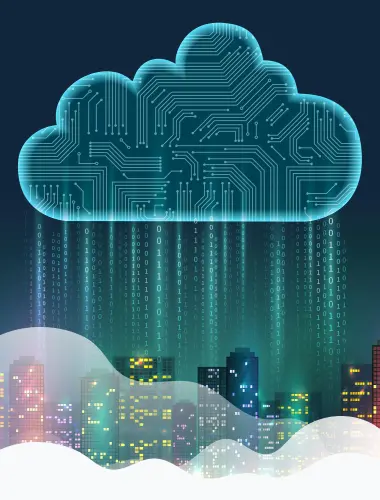Blogs
Peering Vs IP Transit
The Internet means the interconnection of computer networks which is connected by a group of servers and networks the same way cities and towns are connected by roads and highways, all the networks on the Internet need some way to communicate. The two types of interconnection that exists are “IP Transit” and “Peering”.
IP transit: The term “transit” means the transportation of systems from one place to another. In networking, a large amount of data flows from one network to another. For example, it can be similar to the water pipe inside the wall that says ‘Internet this way’.
Peering: Peering is a process by which two Internet networks connect and exchange traffic to distribute traffic to each other’s customers without having to pay a third party to carry that traffic across the Internet for them. The routing protocol that allows peering between ISPs is Border Gateway Protocol (BGP), which is free and benefits all ISPs.
The difference between the two is when an organization connects to an ISP with the motive of accessing the whole internet, it is known as IP transit. It should not be jumbled up with connecting to an ISP over border gateway protocol (BGP) peering, peering is only for an organization’s prefixes and their directly connected peer.
Different levels of ISPs:
Numerous ISPs that operate within a city/town. The internet that we access at home is provided by Tier-3 ISPs. These are the most basic level of ISPs are subject to a limited area. ISPs that cover large population-based areas are Tier-2 ISPs and can cover the whole state or an entire country. Tier-1 ISPs are in-charge for global internet connectivity. These ISPs have non-disclosure agreements with each other for the transit of data. These may include the amount of data to be exchanged, the use of the equipment among others.
Tier -1: The Tier-1 ISP is a transit free network. They do not pay for internet transit as they are the transit providers. ISPs of different ranks pay them if they want to acquire internet transit services.
Tier -2: The Tier-2 ISP networks remunerate for internet transit to Tier-1 ISP to acquire some features of the internet. They then provide internet services to Tier-3 ISPs. These ISPs also have an arrangement for internet sharing with each other called peering.
Tier-3: The Tier-3 ISPs are at the lowest of the hierarchy and have to pay for transit as well as peering services.
To choose IP Transit or Peering?
The major difference between IP Transit and Peering is the tariff. While obtaining services from a transit service provider we need to reimburse the traffic settlement costs. But in peering the cost is negligible as the exchange of data is shared. The cost involved in peering is due to equipment, tools and power utilization among others.
Talking about IP transit, an SLA (Service Level Agreement) between the ISP and the transit provider is signed. The SLA states an agreement linking the two parties where the transit provider has to provide certain services to the ISP at a pre-defined charge.
Conclusion:
ISPs have an option of either peering with other networks or purchase IP Transit. On the other hand, some ISPs operate on both services – it is general for a large quantity of an ISP’s traffic requirement to be met through the use of IP Transit, and increased by peering where the conditions are satisfied.
Subscribe to Newsletter
